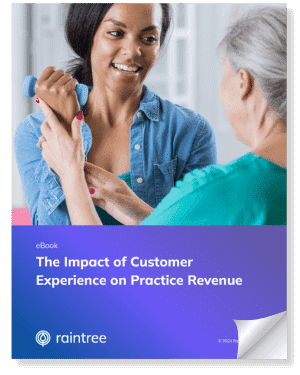With the adoption of virtual care rapidly growing, patient engagement in the digital age is evolving.
According to a survey by Rock Health and Stanford Medical Care, 32% of healthcare consumers had telemedicine visits in 2019, but 43% utilized telehealth in 2020. Over time patients will continue to expect digital outlets for touchpoints like scheduling, completing paperwork via the patient portal, and modern payment options.
Still, some patients may not feel they have the same opportunity to connect with their providers as they would through an in-person visit.
Keep reading to learn how to facilitate modern patient engagement in the digital age by implementing software that stimulates engagement and collaboration throughout the entire patient journey.
Pros: More Opportunities To Involve and Engage Patients
Although it was well-established before Covid-19, telehealth has provided the perfect outlet for supporting social distancing while also maintaining patient care. As it is most commonly used for routine visits, telehealth also offers providers a way to consistently check up on their patients, whether it be discussing prescriptions, nutritional counseling or even conducting certain types of exams. In truth, telehealth gives patients the ability to be more involved throughout their healthcare experiences and helps them better track outcomes, collaborate with providers as well as more effectively pursue the ongoing care they need.
Reaching Rural Communities
For many people, especially those with busy schedules or who are located in rural areas, telehealth empowers easier access to care and contributes to enhanced, more efficient clinical availability. Even services you may think wouldn’t be available during a pandemic, like physical therapy, mental health or pulmonology, all are made accessible via video chat sessions, electronic mobile apps and remote patient monitoring tools.
Telehealth and Patient Engagement
Additionally, telehealth encourages patients to actively navigate their visits with secure portal messaging, options to invite single or multiple attendees as well as participate in real-time through screen sharing capabilities.
Virtual waiting rooms and self-check in kiosks also enable patients to fill out their medical history, verify their insurance or sign clinical forms and questionnaires, all from one secure, online source. Providers can even automate engagement campaigns, facilitate appointment reminders and distribute email blasts in an effort to not only stabilize treatments but ultimately foster real relationships.
Cons: Lack of Internet Access, Comfort and Personal Interaction
Although there are many benefits to telehealth, there are some downsides. For starters, to access telehealth, patients must have internet and a computer or smart mobile device. That means patients who live in areas with restricted connectivity, may have limited opportunities for telehealth. Along with geographic constraints, it’s also important to consider different patient demographics, in terms of older patients not necessarily knowing how to operate technology or others simply not feeling comfortable with receiving care virtually.
Technology may also feel cold and impersonal at times. Although scheduling an appointment online is expedient, it can cause patients to miss out on friendly interactions with front desk or clinical staff. Similarly, some patients may often feel overwhelmed rather than supported if they receive too many messages or are bombarded with reminders that aren’t directly relevant to them.
Read the eBook:
The Impact of Customer Experience on Practice Revenue

Solving the Challenges of Patient Engagement in the Digital Age
Providers can address some of these challenges with business intelligence and analytics that help monitor patient satisfaction rates, predict data trends as well as better manage communication preferences, so that it is easier to report message open rates, content views and form submissions. Furthermore, users can also examine data to identify certain patients and provide targeted, relevant engagement through the channels they prefer.
Modern Patient Engagement Software
Raintree recognizes that technology not only innovates how care is delivered but most importantly, it helps “make healthcare efficient, affordable and accessible for EVERYONE.”
As we move into the post-pandemic era, it’s clear that telehealth is here to stay, despite some subtle downsides. Whether patients attend virtual visits, self-schedule appointments, make payments online or engage their providers via text and email, most people will continue to push for digital engagement as long as it is readily available.
That’s why providers should embrace technology so that they can improve patient retention, increase clinical productivity as well as promote genuine, meaningful interactions with patients.


